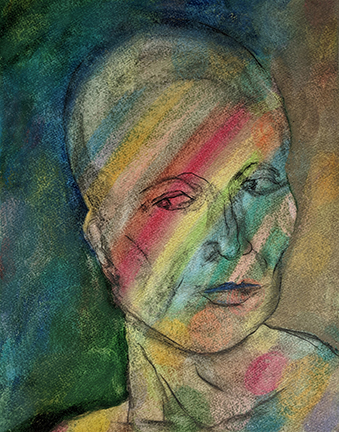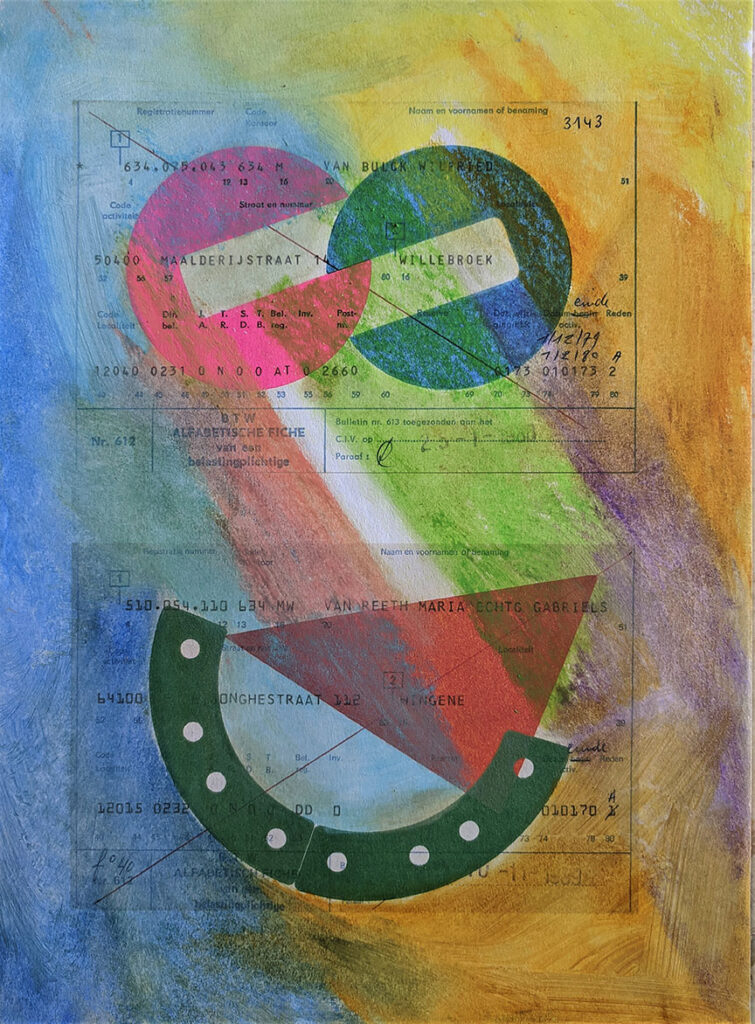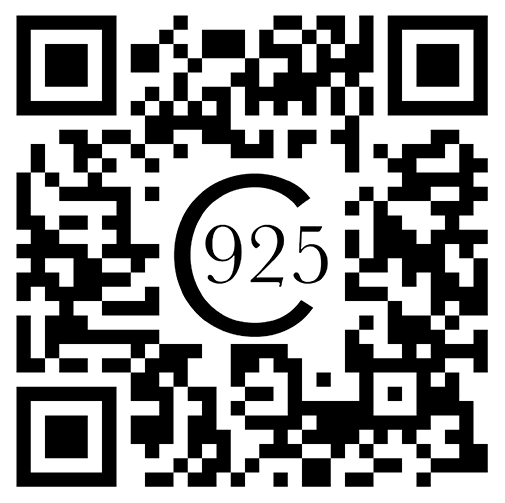Last spring, when COVID started, I decided to paint a self-portrait. This seemed like a worthy endeavor during a pandemic: to leave my countenance behind should I succumb to the virus.
I enjoy combining oil paint with an 8B pencil. First, I stain heavy paper with abstract oil wash designs, the paint thinned with turpentine. When the oil dries, I draw with the soft 8B pencil which renders rich contour lines. These expressive, sometimes wiggly lines define the interesting edges of an eye, nose or chin.
I gaze into a mirror while my hand slowly draws. I control the pencil by switching my eyes from the mirror to the paper, back and forth, all the while making judgments about what looks right. The viewer can recognize eyes, ears, nose and mouth, although these features might be interrupted by a swirling background. I adore this unplanned intermixing of lines with the color field.
As most people would expect in a portrait, a psychological presence manifests. Gazing sideways, what captures her eye? Answer: the mirror, but this remains mysterious to the viewer. Has a tragedy occurred to make her bald? In reality, I have shoulder-length hair. I feel a particular thrill when painting the shape of a skull. It’s an intriguing form and I indulge myself.

When I use another drawing technique, called “blind contour,” I give up all control. The lines become more abstract. I concentrate only on the mirror. Never looking at my paper, I allow my hand complete freedom to wander wherever it wants as it intuitively responds to what I see in the mirror. The odd-looking faces that result intrigue me.
Both regular contour drawing and blind contour remain so enjoyable, I end up doing one after another, creating an unintentional series, rather than the single portrait I’d originally intended. It takes a few weeks to complete a portrait. Once done, I find myself eager to keep exploring. I begin a new piece with a variation, such as drawing only with my left hand. I’m right-handed, so this means delving further into abstraction. The result resembles one of the stepfathers I had as a child, so I title this one “Frank.” Mom’s husbands ranged from horrible to okay, like Frank. I don’t mind that he showed up for a visit.

One day, itching to do something different during a pandemic lockdown, I grab office supplies and old receipts. I comb through the pile of detritus, and eventually combine the fragments using my beloved oil paints, into three abstract collage faces. I delight in the jolly visages that emerge. I hope they’re self-portraits of my inner self.

The office supply collages charm me. But when I look at all my completed portraits together, I become annoyed and mentally punish myself. My mind repeats negative harangues, such as: I’m a gadfly, unable to stick to one style. In the art world, to be considered professional, an artist shows consistency, exploring one style for years or a whole career. Critics allow minor variations as part of the investigation. I personally consider the idea of expecting artists to stick to one style to be an evil plot created by critics to make their jobs easier. Once they form an opinion of an artist’s work, they need delve no deeper. Michelangelo equals hefty nudes. Caravaggio means dramatic light. Vermeer’s known for intimate peopled Dutch interiors. Warhol makes us think of soup cans. When I add in all my other work, I create in eighteen different styles. I’ll probably never exhibit these portraits because their diverse styles won’t fit into art world etiquette. They’re my private delight. For exhibits, I show the consistent work the critics have written about and expect me to do. Luckily, I enjoy that work too. But it’s fun to bust out of the mold once in a while.
After twelve portraits over nine months, I find myself with four distinct styles: controlled contour, blind contour, office supply collage and a ghost. I have no idea where the ghost comes from or how to describe the style. But I love the ghost’s expression of surprise, as if asking, “How did I get here?” She looks the way I felt as a child growing up in a tumultuous household with inebriated parents. I must claim her even if I can’t fit her into an aesthetic slot.

In my thirteenth portrait, during the ninth month of the pandemic, an old friend named Joe Bishop appears on my paper.

As usual, I stare at my mirror, doing a controlled contour drawing on my prepared oil-saturated thick paper. Although I believe I’m drawing myself, much to my shock, Joe’s face emerges as an older man, as he would look today if he had lived. Joe died in his twenties of AIDS. Now, I feel as if Joe had come for a visit from another world. I talk to him about times past and the fun we enjoyed in our social group of exploring art students.
As if through Joe’s eyes, all at once, I become able to re-frame my thoughts and start to appreciate the rich stylistic diversity of my work. I see my painted faces as social calls by spirit friends from other dimensions, dropping in, like Joe had.
With dawning awareness, I begin to recognize the portraits, like I’m seeing old friends. The goddess Parvati, a Hindu deity and Shiva’s devoted wife, seems to bend close from on high, infusing me with her love, devotion and creativity.

Artemis, Greek goddess of the hunt and the moon, appears to hold small moons around her head. Perhaps she’s pulling in electric energies from the ether as she senses the living beings around her. Her gaze penetrates through the viewer with spiritual intensity.

Seeing my work through Joe’s and others’ eyes, I perceive the varying styles as abundant creativity and fun, communication with my intuition, not an erratic collection doomed to negative art world interpretation. My self-criticisms stop.
I create most of these portraits by staring at myself in the mirror. Perhaps, as a conglomerate, all of them together comprise one multi-faceted self-portrait that includes both my inner and outer selves. Joseph Campbell, the professor of literature who focused on mythology and comparative religion, author of Hero of a Thousand Faces, tells us that we don’t find our gods outside of us. They dwell within, part of our psyche. This makes sense to me. Where I see Joe, Parvati, Artemis, office supplies and the ghost, I see myself. I enjoy this lovely revelation.
Kaethe Kauffman’s one-person exhibit, La Foresta, is at Castello Gallery 780 in Venice, Italy, April 19 to June 23, 2024. Castello Gallery 780 is affiliated with the Venice Biennale art fair.
